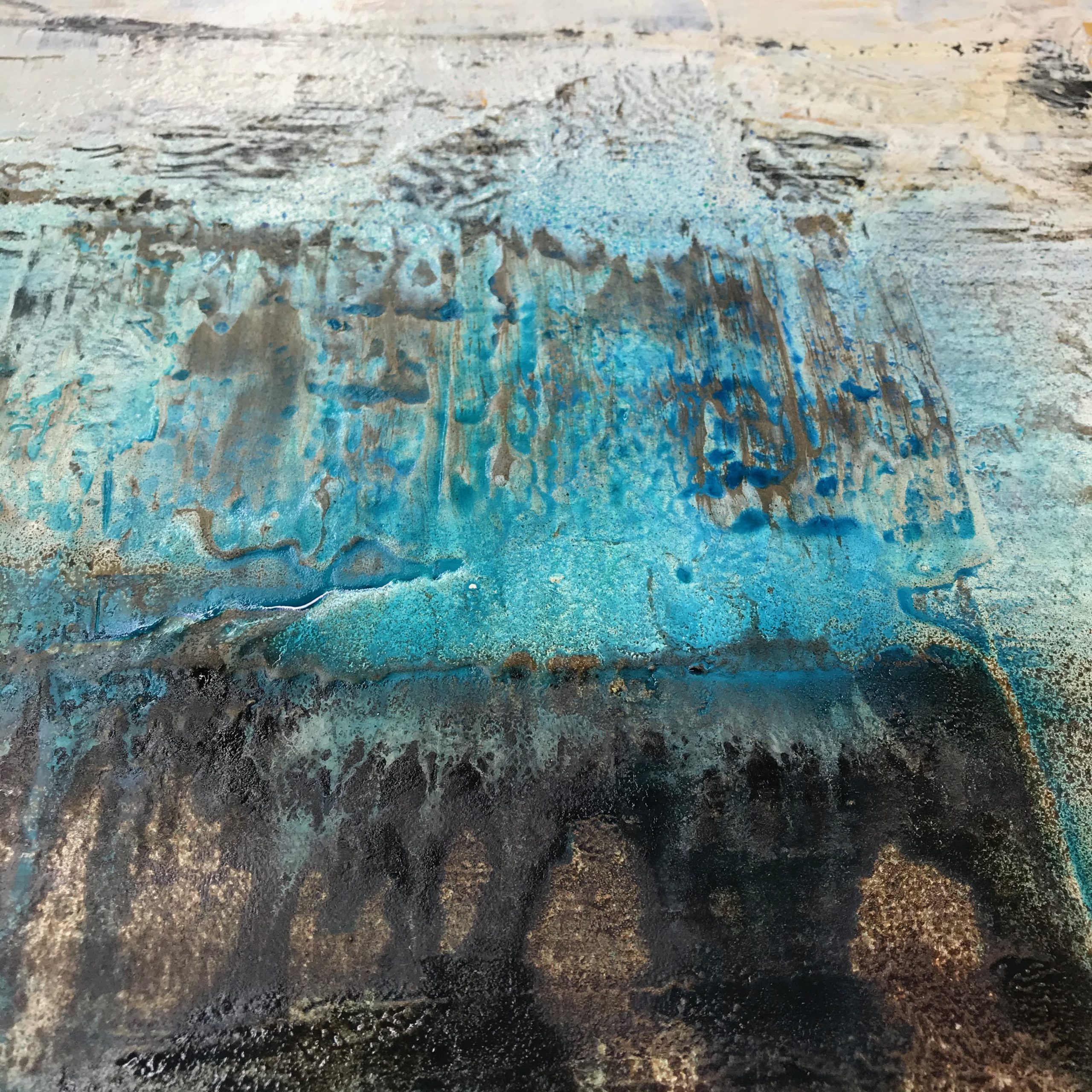WAT IS HET VERSCHIL TUSSEN BISTER SPRAY EN LIQUIDPOWER?
Wat zijn de grootste verschillen? Bister is veel transparanter dan liquid Power en lijkt meer op een inkt. Liquid Power is een vrij dekkend vloeibaar kleurpigment, veel intenser van kleur als bister. Bister bruin is UVA resistent, de andere kleuren niet. Bister is niet waterresistent en vraagt een vernis na droging. Liquid Power daarentegen is wel 100% UV resistent maar ook niet watervast. Ook hier raden we aan om na gebruik ervan jouw werkstuk te beschermen met Easy Varnish.
KAN IK ZE SAMEN GEBRUIKEN?
Ja je kan beiden (Bister en LiquidPower) samen op een schilderij of beeld gebruiken. Gebruik ze naast en door elkaar voor speciale kleureffecten in een nog natte Powertex laag. Gebruik LiquidPower wit om pasteltinten te maken of op een donkere Powertex laag om donkere crackels te krijgen (donkere barsten in de plaats van witte barsten). Hou ook een spray flesje gevuld met water bij de hand om te intense kleuren te verzachten, of om kleuren makkelijker en zachter in elkaar te laten overvloeien.
VOLG DEZE STAPPEN VOOR EEN OPTIMAAL RESULTAAT
Zorg ervoor dat jouw doek geen olie geprepareerd doek is maar een doek dat geschikt is voor acryl. Als je voelt dat bij het eerste contact met Powertex, het product moeilijk hecht en weer open trekt, was dan eerst jouw doek met water en zeep en spoel het af. Breng eerst een grondlaag Powertex aan. Powertex werkt als een gesso en gaat een binding aan met jouw doek. De daarop volgende lagen gaan dan beter hechten. Wil je snel werken, gebruik dan een groot palletmes om de grondlaag dun uit te smeren. Laat drogen. Breng een tweede laag aan die centraal wat dikker is. Hoe dikker de Powertex laag, hoe groter de barsten. Kies jouw favoriete kleuren naast en door elkaar. Begin met het sprayen eerst op de dunste laag Powertex, zo krijgt de dikste laag heel even meer tijd om te drogen. Spray dan de kleuren op de dikke laag Powertex. Zet de haardroger op de hoogste stand en begin met föhnen op de dunste Powertex laag, daar krijg je dus minuscule crackles. Behandel nadien de medium dikke lagen. Bewerk de dikste laag als laatste.










